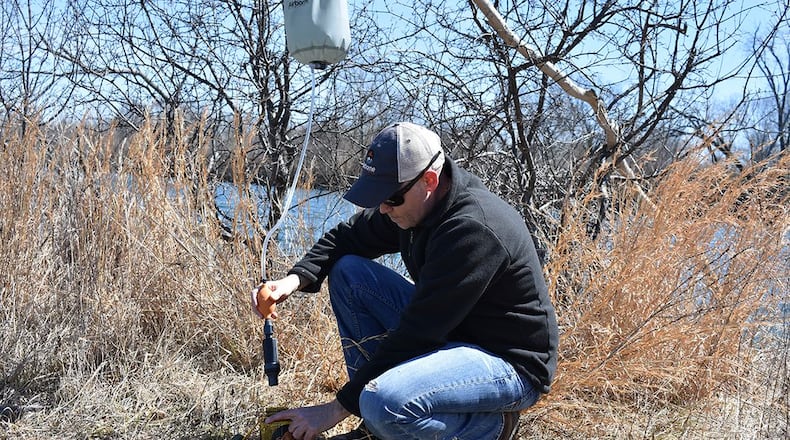The local business and the Naval Surface Warfare Center in Crane, Indiana, inked the tech transfer deal on Dec. 1, the Tech Link blog reported.
Tech Link, based at Montana State University, helps bring about technology license agreements across the Department of Defense. It has worked with several Dayton-area companies, including Dayton’s Battle Sight Technologies and Riverside’s GlobalFlyte Inc., among others.
The Navy’s device can transform radio waves from airborne emitters, which are found on aircraft and unmanned aerial drones, in such a way that a unique signature is detected.
“Ejected pilots could assemble the device from their survival pack,” the TechLink blog states. “Because it’s not a powered transmitter —no batteries required — it would be quite difficult for hostile actors to detect.”
The idea is simple: Once search-and-rescue crews receive the signal, a pilot’s position can be geolocated and authenticated.
“I’m excited to leverage the Navy’s R&D into new products with military and non-military customers,” Jason Evatt, chief executive of Airborne Outfitters and Air Force retiree, told TechLink. “The technology has been prototyped and tested at the lab and that’s a big head start in product development.”
Evatt should be a familiar name to those who follow Dayton innovators. He has called one of his earlier inventions, dubbed the Bitterroot, “the world’s first 3-in-1 dry bag.”
The idea for the bag came to Evatt while he hiked through the high-country of the Bitterroot Mountains in Montana.
What came of that trip was the first multi-functional outdoor equipment to keep gear dry, filter water and inflate air mattresses and air pads, he has said.
Evatt wanted to make and assemble all components of the Bitterroot in the United States.
“That was honestly part of the reason I wanted to do it — because it was hard,” Evatt told the Dayton Daily News in 2018.
The reflector was invented in 2015 by Gerry Miller and James Stewart who work at the Navy research center. A patent was awarded to the Navy in 2017, TechLink reported.
About the Author



